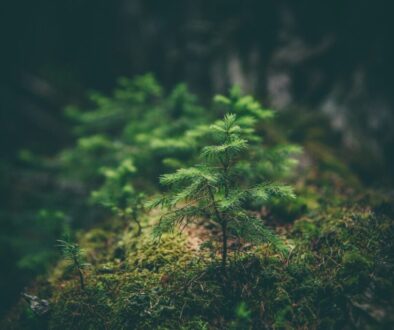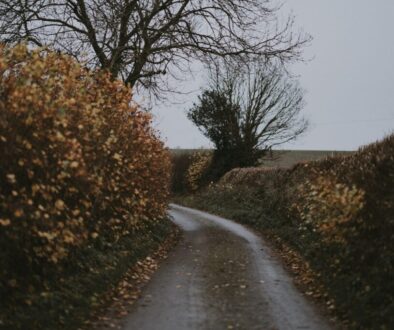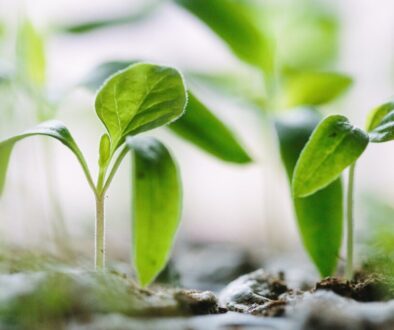Protecting our green and pleasant land?
WILL a dozen new large-scale conservation areas protect England’s rural environment? Or will they create a picture postcard countryside? Jessica Sellick investigates.
People enjoy the natural environment in many different ways, from taking healthy exercise and the challenge of a long walk, a horse or cycle ride; to experiencing the landscape in ways that make them appreciate its quiet tranquillity and inspiring landscapes. The ‘Monitor of Engagement with the Natural Environment’ (MENE) Survey undertaken by Natural England, Defra and the Forestry Commission provides information and data about people’s visits to the natural environment. According to the latest Survey, in 2010-2011 the English adult population participated in an estimated 2.49 billion visits to the natural environment, a 13% decrease on the 2.86 billion visits taken during 2009-2010. The frequency of visits varied greatly – with 53% of respondents visiting the natural environment once a week compared to 9% that had not taken a visit in the previous 12 months. Interestingly, the number of visits made to farmland, mountain, hill, moorland and woodland environments increased (with the average visit lasting just over 2 hours), whilst decreases in visits to urban parks and open spaces in towns and cities were recorded. The Survey found that the more frequently people visited the natural environment; the more likely they were to appreciate it and be concerned about environmental damage.
These findings resonate with the Halifax 2012 Rural Areas Quality of Life Survey, which ranks rural local authority districts on the basis of health, education, the labour market, the housing market and the environment. Here, East Cambridgeshire was found to have the best quality of life of any rural area in Great Britain, followed by Wychavon, South Cambridgeshire, East Hertfordshire, Waverley and Aylesbury Vale.
Alongside these surveys, the natural environment is making its way up the public agenda. The Environment Agency’s latest Water Situation Report found March 2012 to be another dry month with England and Wales receiving just 38% of average rainfall and all regions receiving below average rainfall. According to Helen Vale, the Environment Agency’s National DroughtCo-ordinator: “Although there has been some welcome rain recently, the drought has not gone away and it is as important as ever that businesses, water companies and consumers all play their part by using water wisely. The drought has already prompted a ‘borehole boom‘, with some rural homeowners digging shafts on their land to get around the hosepipe ban (spending £3,000-£10,000 to install a system for which they require no licence providing no more than 4,000 gallons are taken up per day). In April 2012, a report published by the British Geological Society into fracking (a practice whereby a well is drilled hundreds of metres deep and pumped full of water, sand and chemicals in order to release methane gas) concluded that the earthquake risk was low and that hydraulic fracking should be allowed on a wide scale. Yet some rural residents and preservation groups argue that fracking changes the nature of the landscape from a rural one to an industrial one. Meanwhile, a national body opposing windfarms (called ‘Now‘) has launched a campaign in the House of Lords to help individuals and communities campaign against the building of wind turbines in their areas.
What these issues unwrap are the differences between those who think of the natural environment as being separate from human activity; as something worthy of preservation in its current form (emphasising its aesthetic value and/or the ugliness of activities being ‘imposed’ upon it). And those for whom the natural environment presents very real opportunities to address issues around quality of life, recreation/access, water, energy and climate change. It is easy in this debate to lose sight of the fact that much of England remains undeveloped – almost 90% according to a key Centre for Cities report published in 2010.
Perhaps now is opportune to think therefore about our relationship with the natural environment and consider the legacy we may leave behind. I offer 3 points.
First, what do we mean by the natural environment and how do we seek to enhance and protect it? The Department for Environment, Food and Rural Affairs (Defra) seeks to reduce pollution, mitigate greenhouse gas emissions and prevent habitat loss and degradation; defining the environment in terms of its different aspects: air, water, biodiversity, land, soil and the marine environment. For Natural England, it encompasses ‘green open spaces in and around towns and cities, as well as the wider countryside and coastline’. And at the Environment Agency, it is ‘the air you breathe, the water you drink and the ground you walk on’. In June 2011, the Government launched ‘the natural choice’, the first Natural Environment White Paper (NEWP) in 20 years, outlining the Government’s vision for the next 50 years and the practical actions needed to deliver it. According to Environment Secretary Caroline Spelman: “The natural environment matters to us all – not just because it makes us feel good when we stumble across a bluebell wood or spot a pair of goldfinches, but because we are now all able to see the terrible price we would pay if we lost what we have or neglected to care for it. Nature belongs to us all, and we’ve all got a vested interest in protecting it. That’s why the true value of nature should be built in to the decisions we make – as individuals, organisations, businesses and governments.”
In practice, key measures contained in the NEWP are being implemented, from the designation of 12 Nature Improvement Areas (NIAs) to biodiversity offsetting pilot areas; and from the opening of applications to become a Local Nature Partnership (LNP) to the creation of the Natural Capital Committee (NCC). All of these initiatives share in common four key words ‘more, bigger, better and joined’ as well as highlighting how economic growth and the health of natural resources can sustain each other, markets and businesses. On this note, Rose Regeneration is currently working with Pennine Prospects to support their application for the South Pennines to become a LNP. We are helping businesses understand the economic value of ecosystem services provided by the South Pennines; building links with voluntary and community sector organisations; and liaising with neighbouring LNP proposals to resolve boundary issues. This work is revealing the importance and value of the South Pennines landscape (its key natural characteristics and human influences) and how the landscape has been consistently transformed over millennia to benefit the 450,000 people who live and work in the local area and the 7 million people that live within an hour’s drive.
Second, there is growing recognition of the contribution that the natural environment makes to improved health and well-being outcomes, community cohesion and local economies. Natural England recently launched an ‘evidence based information pack’ looking at why and how the natural environment can form an integral part of public health. Usefully, the pack is underpinned by a flow diagram setting out how amid the ever changing health structure in England, the use of green space can help deliver a cost effective and joined up health service (e.g. addressing outcomes around mental health, obesity, childhood cognition). Similarly, the Commission for Architecture and the Built Environment (CABE) have looked at the connections between green space, ethnicity and inequality in deprived areas. ‘Natural Foundations‘, a report published by the RSPB clearly documents how protecting nature generates economic activity. These studies mark a step change in our understanding of the importance of nature through economies and well-being.
Third, and perhaps most importantly of all, there are a number of excellent examples showcasing how communities are protecting and enhancing the natural environment (often delivering health, well-being and economic benefits at the same time). Incredible Edible Todmorden is a community group which grows and campaigns for local food. This includes working on greenfield sites to create more growing and learning spaces and on donated land to develop ideas about hill-top farming. ‘Your Natural Heritage‘, a project by Shropshire Council is providing community groups with training and support to enable them to undertake habitat surveys and discover biodiversity on their doorstep. The Community Toolkit for the Natural Environment (produced by Devon County Council with help from Groundwork South West and the Community Council of Devon) is a first steps, non-technical guide to engaging with the local natural environment and sets out examples of project ideas alongside wildlife priorities. The Community Council of Devon is now following this up by asking groups in Devon how they make use of the natural environment (parks and gardens, countryside and coast). Rose Regeneration are currently working with Rural Community Action Nottinghamshire to help transform the Newstead and Annessely Country Park, 220 acres of remediated coal mine and land. Gifted to the organisation by emda and supported in its initial evolution by Village SOS this wonderful community facility, we hope, will soon fulfil its potential as a community owned “green lung” in heart of the former Nottinghamshire Coalfield. Finally, the Green Food Project is looking at the challenge of how we can increase food production and enhance the environment in England, and how we might reconcile any tensions that this challenge raises (Defra is welcoming comments on this until the end of May 2012).
To explore the implications of the Natural Environment White Paper and discuss the issues here further, the Rural Services Network is holding an event on 8 May at the University of Exeter. The event will be chaired by Professor Michael Winter (Director of the Centre for Rural Policy Research) and include presentations from Rob Fish (ecosystem services), Stuart Barr (transition towns) and Mike Kelly (localism), with plenty of time for discussion. For more information and to book your place at this free event please contact Wendy Cooper by email wendy.cooper@sparse.gov.uk or telephone 01822 813693.
Jessica has undertaken a variety of projects on the natural environment and countryside management. These include: Preparing the Yorkshire Dales Local Food Map (celebrating the distinctiveness of the Dales landscape); considering how the Common Agricultural Policy (CAP) can be reformed to benefit rural communities; and supporting community groups in understanding natural resource management. For more information about Rose Regeneration’s current work on Local Nature Partnerships and other environmental projects, please contact Jessica by email jessica.sellick@roseregeneration.co.uk or telephone 01522 521211.


